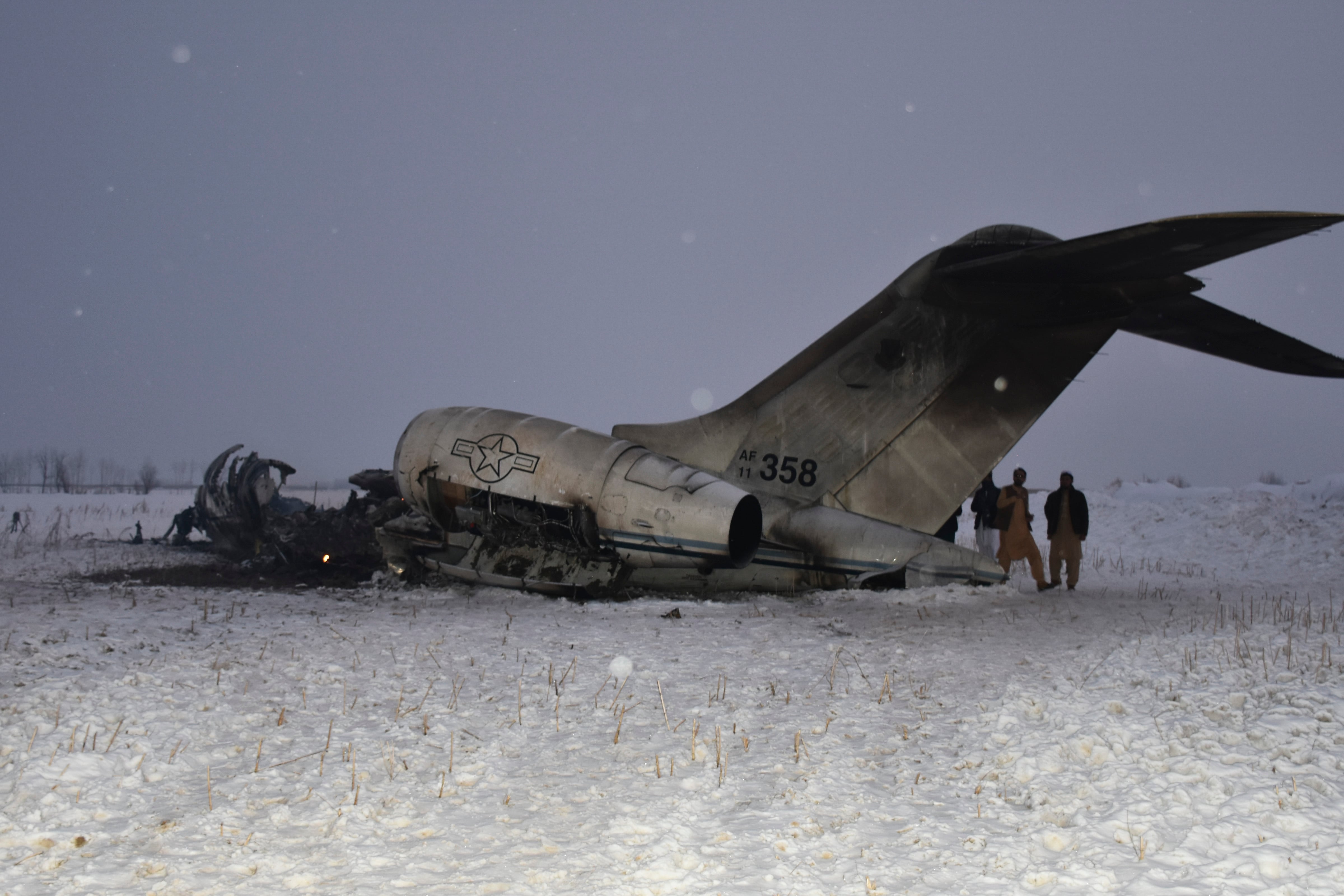A broken fan blade that led to engine failure, followed by the pilots’ shutoff of the other engine, led to the fatal crash of a Bombardier E-11A communications aircraft in Afghanistan last January, according to an accident investigation report released Thursday.
Lt. Col. Paul Voss, 46, and Capt. Ryan Phaneuf, 30, died while trying to conduct an emergency landing of their damaged and gliding E-11A in a field in Ghazni province on Jan. 27, 2020.
While the broken fan blade and subsequent engine failure sparked the emergency, the Air Combat Command investigation concluded the crash was caused by the air crew erroneously identifying which engine had failed. As a result, Voss and Phaneuf shut off the wrong engine, leaving the aircraft without any operating engines producing thrust and creating a dual engine out emergency.
The crew’s failure to restart the correct engine in the air, and their attempt to return to Kandahar Air Base, substantially contributed to the mishap, the report said.
Voss and Phaneuf took off from Kandahar at about 11:05 a.m. local time that day to conduct both a mission qualification training flight for Phaneuf and a combat sortie to support Operation Freedom’s Sentinel.
They were to serve as a Battlefield Airborne Communications Node, which is sometimes nicknamed “WiFi in the sky,” to allow troops using different communications systems, both in the air and on the ground, to share and relay voice, video, images and data. This aircraft’s relay capability is especially important in Afghanistan, where the mountainous terrain can sometimes disrupt communications channels.
The flight proceeded uneventfully for about an hour and 45 minutes until a fan blade in the left engine broke free, causing major damage to the engine and its automatic shutdown. The cockpit voice recorder captured the loud bang of the fan blade’s breaking, but stopped recording after that for the rest of the flight.

Because the warning signal did not immediately light up for the catastrophically damaged left engine — it took several seconds for its RPMs to drop below the point that would have triggered the signal — the crew didn’t immediately know which engine had blown.
RELATED

The pilots thought the right engine had experienced the emergency, leading them to shut it down instead of the left one. The shutdown meant the plane now had no engines operating, and happened relatively quickly, about 24 seconds after the fan blade broke.
The pilots issued a mayday call reporting their engine failure, and said they hoped to turn back and glide to Kandahar — 230 nautical miles away.
The investigators believe the crew tried an engine restart several times, but were unsuccessful.
The data that was available — though that data was incomplete — showed the right engine’s switch had not been moved back to the on position, and there was no sign the crew tried to restart it. Had they tried, they likely would have been able to restart the right engine, the investigators wrote. The crew may have not tried, mistakenly believing the right engine was the damaged one, the report said.
The plane was by that point a glider, and they had no shot at gliding all the way to Kandahar.
The crew had few options left. Other potential landing sites, such as Bagram Air Field, Kabul International Airport, and Forward Operating Base Shank were also beyond reach.
The pilots turned toward FOB Sharana, but didn’t have the altitude and airspeed to make it. They tried to land in an unpopulated and snowy field about 21 nautical miles short of the base. But the field, though it appeared mostly flat, had several berms and ditches that were three to six feet high.
The aircraft appeared to have touched down, but was destroyed in the attempted landing after hitting a smaller berm. Both pilots were killed.
“This tragic accident and the loss of these two Airmen will not be forgotten,” said Gen. Mark Kelly, commander of Air Combat Command. “These Airmen gave the ultimate sacrifice in service to the nation while deployed supporting an overseas combat mission. They should be recognized and remembered for their dedication and bravery.”
The investigation found no evidence suggesting that maintenance inspections, procedures or personnel contributed to the mishap — though it does not address what may have caused the fan blade to break off.
The report said the pilots may have been startled by the loud bang of the fan blade breaking and the aircraft’s severe vibrations. This may have led them to react immediately and shut the right engine down in an attempt to prevent further damage, without realizing the left engine had been damaged.
Stephen Losey is the air warfare reporter for Defense News. He previously covered leadership and personnel issues at Air Force Times, and the Pentagon, special operations and air warfare at Military.com. He has traveled to the Middle East to cover U.S. Air Force operations.





